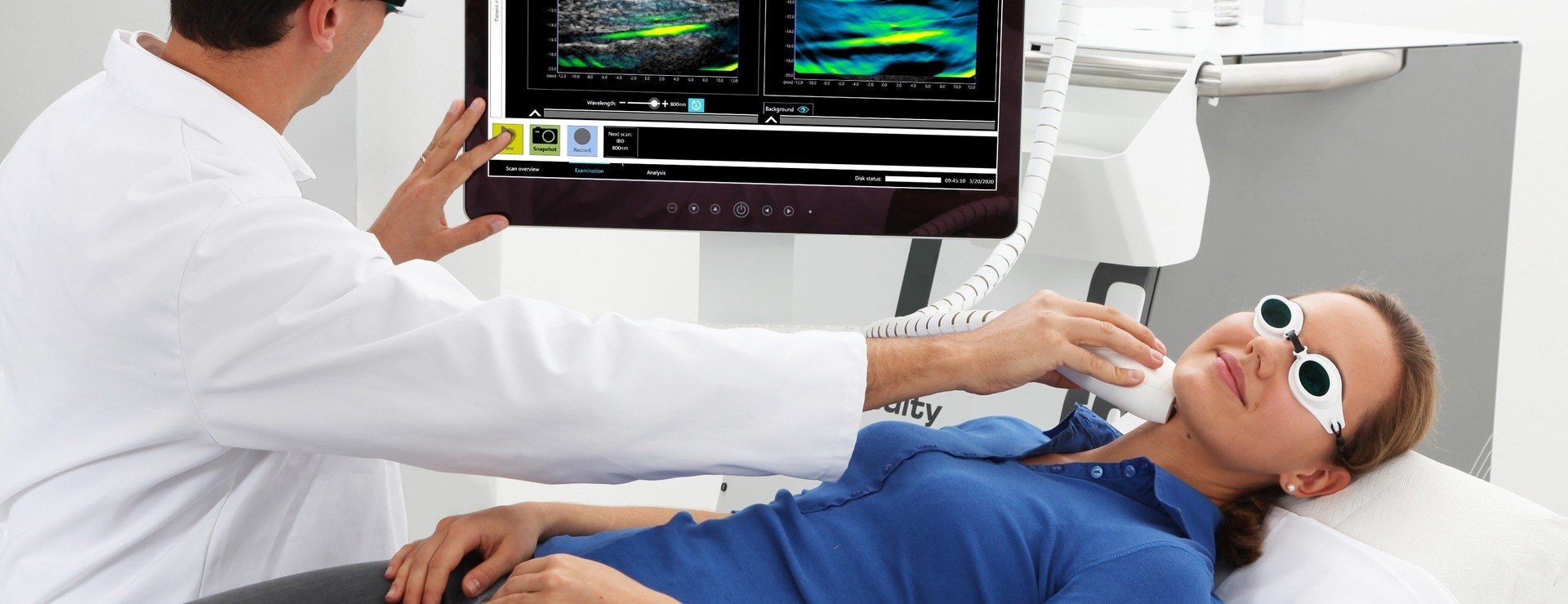Researchers at Helmholtz Munich and the Technical University of Munich have made significant progress in advancing high-resolution optoacoustic imaging for clinical use.

Image Credit: Helmholtz Munich
Their groundbreaking deep-learning framework, named DeepMB, shows significant potential for patients grappling with various illnesses such as breast cancer, Duchenne muscular dystrophy, and inflammatory bowel disease. The team's findings have recently been published in the journal Nature Machine Intelligence.
Scientists and medical professionals frequently turn to imaging techniques like ultrasound or X-Rays to comprehend and identify diseases. Nevertheless, the resolution and depth of the resulting images can be restricted or inadequate, depending on the type of tissue being examined.
Optoacoustic imaging, a relatively recent method, integrates the principles of ultrasound and laser-induced optical imaging, and has emerged as a potent medical imaging tool, enabling non-invasive assessment of a diverse array of diseases, including but not limited to breast cancer, Duchenne muscular dystrophy, inflammatory bowel disease, and numerous others.
While this technology holds immense promise for clinical applications, its practical utilization has been hindered by the necessity for exceedingly time-consuming processing to generate high-quality images.
In response to this challenge, a group of researchers from the Bioengineering Center and the Computational Health Center at Helmholtz Munich, in collaboration with the Technical University of Munich, has introduced a deep-learning framework known as DeepMB. This innovation will enable clinicians to acquire high-quality optoacoustic images in real-time, representing a significant leap forward in the clinical adoption of this technology.
The research centers on multispectral optoacoustic tomography (MSOT), an innovative optoacoustic imaging technique initially developed by Prof. Ntziachristos and his research team at Helmholtz Munich and the Technical University of Munich. This technology has been further advanced through continuous collaboration with their spin-off company, iThera Medical GmbH, which distributes and enhances it.
An MSOT scanner operates by utilizing the optoacoustic effect, generating sound waves when a material absorbs light. These sound waves are captured by the instrument and converted into images through specialized reconstruction algorithms and then displayed on the scanner's monitor.
Unfortunately, the simpler algorithms that can reconstruct images quickly enough to display them in real-time can only deliver low-quality images, while the more complex algorithms that can produce high-quality images take far longer than what would be practical in a clinical setting.
Optoacoustic Imaging Accelerated for Faster Results Without Compromising Image Quality
The newly developed neural network, DeepMB, demonstrates a remarkable capability to reconstruct high-quality optoacoustic images at a speed roughly a thousand times faster than the state-of-the-art algorithm, all while maintaining virtually no loss in image quality. The key breakthrough responsible for this achievement lies in the training strategy adopted for DeepMB.
This training strategy hinges on the utilization of optoacoustic signals synthesized from a diverse set of real-world images paired with optoacoustic images reconstructed from the corresponding signals.
Notably, this framework addresses one of the major challenges in artificial intelligence (AI): generalization. This means that DeepMB can accurately reconstruct all scans acquired from any patient, regardless of the part of the body being targeted or the disease being analyzed.
Facilitating the Clinical Application of Optoacoustic Tomography
Using DeepMB, clinicians will, for the first time, have direct access to optimal MSOT image quality. This represents a major leap forward for this technology, positively impacting clinical studies and ultimately helping patients receive better care.
The fundamental principles of DeepMB are highly flexible and can be seamlessly integrated into various reconstruction techniques in optoacoustic imaging, aligning with ongoing research endeavors at Helmholtz Munich.
The researchers also hope to extend this framework to other imaging modalities, including ultrasound, X-Ray, and magnetic resonance imaging (MRI).
Journal Reference:
Dehner, C., et al. (2023). A deep neural network for real-time optoacoustic image reconstruction with adjustable speed of sound. Nature Machine Intelligence. doi.org/10.1038/s42256-023-00724-3.